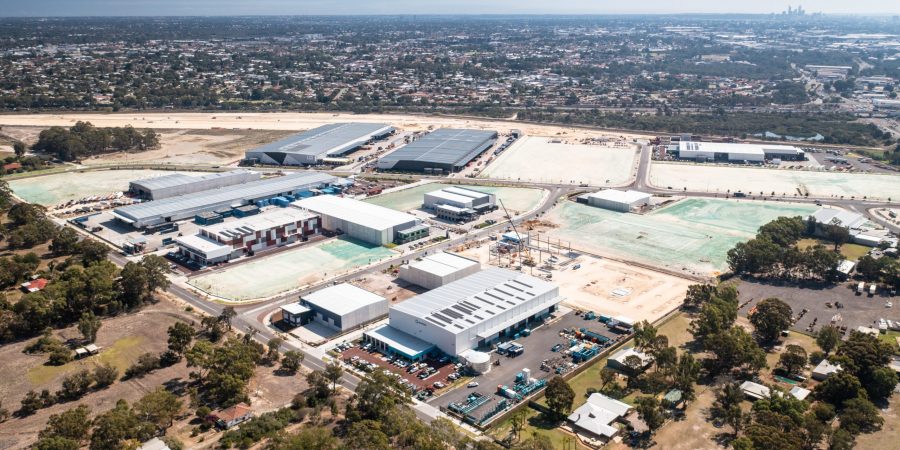
An aerial of the Roe Highway Logistics Park site.

The face of local industrial development is rapidly changing, with demand for environmentally sustainable facilities coming from both local and international businesses.
Over the last 12 months, there has been a rapid shift in the perceptions of environmental sustainability in industrial and other development. The impact of COVID and the need to adopt different approaches to living and working has opened people’s mindsets and accelerated the already-growing demand for sustainable developments.
Hesperia believes that an industry-led approach is going to be the fastest and most efficient way to achieve carbon neutrality in the broader property sector which is a major contributor to total carbon emissions.
Sustainable materials and renewable energy solutions products have historically met with low uptake due to cost. However, our recent experience at Roe Highway Logistics Park (ROE) shows that carbon neutrality is now an achievable goal for industrial land developments in Western Australia, benefitting owners and tenants alike.
Hesperia has gone carbon neutral as a business. We’re now seeking to deliver carbon neutrality across all our projects. As we build our experience in sustainability, we hope to demonstrate what is possible in this field and act as a catalyst for adoption of sustainability initiatives across the property market.
The Hesperia team is driven on multiple levels to be at the forefront of environmental sustainability. At a personal level, I’ve become increasingly concerned about climate change over the past four to five years and have been very interested in how best to address this issue at scale in developments. In addition, we know sustainability is increasingly important to our staff, financiers, customers and other key stakeholders.
Our sustainability strategy is to understand and employ environmental best practice for the various property classes in which we are active. The goal is to minimise the carbon footprint of every project, both in the construction phase and in the ongoing operation of the facility. This includes maximising the use of recycled or sustainable materials, maximising the energy efficiency of the facilities, and maximising the use of renewable energy. Any remaining carbon emissions will be offset through the purchase of carbon credits.
As part of this strategy, Hesperia is now actively building businesses in renewable energy, recycling and carbon farming. These will be used in the first instance to support our own projects, with the long-term intent of also supporting sustainability across the property sector. This re-positions our business from simply buying environmental solutions from others to being part of the solution in our own right.
Hesperia is already demonstrating carbon neutrality can realistically be achieved at ROE. To help encourage sustainable industrial estates, $95 million has been secured from the Clean Energy Finance Corporation (CEFC) to assist in funding a range of sustainability initiatives. This 56-hectare estate will be Perth’s first carbon neutral industrial development.
ROE was launched last year and is now 80% committed, with leading logistics and industrial services businesses including CHEP, Northline, Silk Contract Logistics, BP, Expro, KTrans, Expro Group and Brady Corporation. Key to the estate’s success has been its prime location and focus on environmental sustainability.
By using low carbon concrete across the estate, we will reduce emissions associated with the construction of the facilities by 42 per cent when compared to use of traditional concrete. A Boral low carbon concrete product will replace Portland cement (which is emissions-intensive due to the chemical process of limestone calcination) with industrial fly-ash and recycled aggregates, making it environmentally superior.
Residual project emissions are offset through use of solar power generation and, particularly, the planting of vegetation. Over 4,000 trees have been to offset a significant proportion of the carbon emissions associated with the estate, with the balance of carbon emissions to be offset by the purchase of carbon credits.
The learnings from ROE are a great example of how achieving carbon neutrality can work for both industrial developments and the property sector. Hesperia is now applying them across all its projects and using our continual improvement in sustainability to build renewables, recycling and carbon farming businesses. We see this as a very exciting time in which we can help encourage and support the change to a more sustainable way of doing business across the property sector.
This article was originally published on Business News as ‘Industrial estate users seeking new carbon approach.’


